Preserving the Ephemeral: A Micro-Invasive Study on a Set of Polyurethane Scenic Objects from the 1960s and 1970s
Abstract
1. Introduction
2. Materials and Methods
2.1. Artworks and Collected Samples
2.2. Analytical Techniques
3. Results and Discussion
3.1. Characterization of the Samples
3.1.1. PUR Foam
3.1.2. Binding Media
3.1.3. Pigments
3.2. Assessment of the Conditions of the PUR Foam
3.2.1. OM and SEM
3.2.2. μ-ATR-FTIR
3.2.3. EGA-MS
4. Conclusions
Supplementary Materials
Author Contributions
Funding
Data Availability Statement
Acknowledgments
Conflicts of Interest
References
- Chiantore, O.; Rava, A. Conservare L’arte Contemporanea: Problemi, Metodi, Materiali, Ricerche; Electa: Milan, Italy, 2005. [Google Scholar]
- La Nasa, J.; Moretti, P.; Maniccia, E.; Pizzimenti, S.; Colombini, M.P.; Miliani, C.; Modugno, F.; Carnazza, P.; De Luca, D. Discovering Giuseppe Capogrossi: Study of the Painting Materials in Three Works of Art Stored at Galleria Nazionale (Rome). Heritage 2020, 3, 965–984. [Google Scholar] [CrossRef]
- Pozzi, F.; Arslanoglu, J.; Cesaratto, A.; Skopek, M. How do you say “Bocour” in French? The work of Carmen Herrera and acrylic paints in post-war Europe. J. Cult. Herit. 2019, 35, 209–217. [Google Scholar] [CrossRef]
- Mancini, D.; Percot, A.; Bellot-Gurlet, L.; Colomban, P.; Carnazza, P. On-site contactless surface analysis of modern paintings from Galleria Nazionale (Rome) by reflectance FTIR and Raman spectroscopies. Talanta 2021, 227, 122159. [Google Scholar] [CrossRef] [PubMed]
- Rago, S. L’esperienza Artistica di Miela Reina Nella Trieste Degli Anni Settanta; Università degli Studi di Padova: Padua, Italy, 2022. [Google Scholar]
- Castriota, B. Object Trouble: Constructing and Performing Artwork Identity in the Museum. ArtMatters Int. J. Tech. Art Hist. 2021, 1, 12–22. [Google Scholar]
- van Oosten, T. PUR Facts: Conservation of Polyurethane Foam in Art and Design; University Press: Amsterdam, The Netherlands, 2015. [Google Scholar]
- Shashoua, Y.; Cone, L. Sustainable conservation treatments for large-scale artworks made of polyurethane ether foam in art and design. In Proceedings of the Future Talks Biennial Conference, Queenstown, New Zealand, 11–13 December 2019; pp. 98–107. [Google Scholar]
- van Aubel, C.; de Groot, S.; van Keulen, H.; Snijders, E. Digging into the past of nature carpets. The evaluation of treatments on artworks by Piero Gilardi made from polyurethane ether foam. J. Cult. Herit. 2019, 35, 271–278. [Google Scholar] [CrossRef]
- Pellizzi, E.; Lattuati-Derieux, A.; d’Espinose de Lacaillerie, J.-B.; Lavédrine, B.; Cheradame, H. Consolidation of artificially degraded polyurethane ester foam with aminoalkylalkoxysilanes. Polym. Degrad. Stab. 2016, 129, 106–113. [Google Scholar] [CrossRef]
- Xie, F.; Zhang, T.; Bryant, P.; Kurusingal, V.; Colwell, J.M.; Laycock, B. Degradation and stabilization of polyurethane elastomers. Prog. Polym. Sci. 2019, 90, 211–268. [Google Scholar] [CrossRef]
- Lattuati-Derieux, A.; Thao-Heu, S.; Lavédrine, B. Assessment of the degradation of polyurethane foams after artificial and natural ageing by using pyrolysis-gas chromatography/mass spectrometry and headspace-solid phase microextraction-gas chromatography/mass spectrometry. J. Chromatogr. A 2011, 1218, 4498–4508. [Google Scholar] [CrossRef]
- Shashoua, Y. Inhibiting the inevitable; current approaches to slowing the deterioration of plastics. Macromol. Symp. 2006, 238, 67–77. [Google Scholar] [CrossRef]
- França de Sá, S.; Ferreira, J.L.; Pombo Cardoso, I.; Macedo, R.; Ramos, A.M. Shedding new light on polyurethane degradation: Assessing foams condition in design objects. Polym. Degrad. Stab. 2017, 144, 354–365. [Google Scholar] [CrossRef]
- Thomas, O.; Priester, J.; Ralph, D.; Hinze, K.J.; Latham, D.D. Effect of cross-link density on the morphology, thermal and mechanical properties of flexible molded polyurea/urethane foams and films. J. Polym. Sci. Part B Polym. Phys. 1994, 32, 2155–2169. [Google Scholar] [CrossRef]
- Priester, R.; McClusky, J.; O’neill, R.; Turner, R.; Harthcock, M.; Davis, B. FT-IR-A probe into the reaction kinetics and morphology development of urethane foams. J. Cell. Plast. 1990, 26, 346–367. [Google Scholar] [CrossRef]
- Wilhelm, C.; Gardette, J.-L. Infrared analysis of the photochemical behaviour of segmented polyurethanes: Aliphatic poly (ether-urethane) s. Polymer 1998, 39, 5973–5980. [Google Scholar] [CrossRef]
- Wilhelm, C.; Rivaton, A.; Gardette, J.-L. Infrared analysis of the photochemical behaviour of segmented polyurethanes: 3. Aromatic diisocyanate based polymers. Polymer 1998, 39, 1223–1232. [Google Scholar] [CrossRef]
- Rosu, D.; Rosu, L.; Cascaval, C.N. IR-change and yellowing of polyurethane as a result of UV irradiation. Polym. Degrad. Stab. 2009, 94, 591–596. [Google Scholar] [CrossRef]
- Pellizzi, E.; Lattuati-Derieux, A.; Lavédrine, B.; Cheradame, H. Degradation of polyurethane ester foam artifacts: Chemical properties, mechanical properties and comparison between accelerated and natural degradation. Polym. Degrad. Stab. 2014, 107, 255–261. [Google Scholar] [CrossRef]
- Thompson, D.G.; Osborn, J.C.; Kober, E.M.; Schoonover, J.R. Effects of hydrolysis-induced molecular weight changes on the phase separation of a polyester polyurethane. Polym. Degrad. Stab. 2006, 91, 3360–3370. [Google Scholar] [CrossRef]
- Quye, A. Factors influencing the stability of man-made fibers: A retrospective view for historical textiles. Polym. Degrad. Stab. 2014, 107, 210–218. [Google Scholar] [CrossRef]
- Lovett, D.; Eastop, D. The degradation of polyester polyurethane: Preliminary study of 1960s foam-laminated dresses. Stud. Conserv. 2004, 49, 100–104. [Google Scholar] [CrossRef]
- Lazzari, M.; Reggio, D. What Fate for Plastics in Artworks? An Overview of Their Identification and Degradative Behaviour. Polymers 2021, 13, 883. [Google Scholar] [CrossRef]
- Mitchell, G.; France, F.; Nordon, A.; Tang, P.L.; Gibson, L.T. Assessment of historical polymers using attenuated total reflectance-Fourier transform infra-red spectroscopy with principal component analysis. Herit. Sci. 2013, 1, 28. [Google Scholar] [CrossRef]
- La Nasa, J.; Biale, G.; Ferriani, B.; Colombini, M.P.; Modugno, F. A pyrolysis approach for characterizing and assessing degradation of polyurethane foam in cultural heritage objects. J. Anal. Appl. Pyrolysis 2018, 134, 562–572. [Google Scholar] [CrossRef]
- Zuena, M.; Legnaioli, S.; Campanella, B.; Palleschi, V.; Tomasin, P.; Tufano, M.K.; Modugno, F.; La Nasa, J.; Nodari, L. Landing on the moon 50 years later: A multi-analytical investigation on Superficie Lunare (1969) by Giulio Turcato. Microchem. J. 2020, 157, 105045. [Google Scholar] [CrossRef]
- La Nasa, J.; Biale, G.; Sabatini, F.; Degano, I.; Colombini, M.P.; Modugno, F. Synthetic materials in art: A new comprehensive approach for the characterization of multi-material artworks by analytical pyrolysis. Herit. Sci. 2019, 7, 1–14. [Google Scholar] [CrossRef]
- Izzo, F.C.; Ferriani, B.; Zendri, E.; Annichiarico, S.; Biocca, P.; Keulen, H. The use of polyurethane foam in contemporary Italian design: Case studies from the Triennale Design Museum in Milan. In Future Talks 013—Lectures and Workshops on Technology and Conservation of Modern Materials in Design; Bechtold, T., Ed.; Die Neue Sammlung—The Design Museum: Munchen, Germany, 2015. [Google Scholar]
- Crescentini, T.M.; May, J.C.; McLean, J.A.; Hercules, D.M. Mass spectrometry of polyurethanes. Polymer 2019, 181, 121624. [Google Scholar] [CrossRef]
- Kim, B.-H.; Yoon, K.; Moon, D.C. Thermal degradation behavior of rigid and soft polyurethanes based on methylene diphenyl diisocyanate using evolved gas analysis-(gas chromatography)–mass spectrometry. J. Anal. Appl. Pyrolysis 2012, 98, 236–241. [Google Scholar] [CrossRef]
- Micheluz, A.; Angelin, E.M.; Sawitzki, J.; Pamplona, M. Plastics in robots: A degradation study of a humanoid skin mask made of soft urethane elastomer. Herit. Sci. 2022, 10, 4. [Google Scholar] [CrossRef]
- Ferreira, J.L.; Ávila, M.J.; Melo, M.J.; Ramos, A.M. Early aqueous dispersion paints: Portuguese artists’ use of polyvinyl acetate, 1960s–1990s. Stud. Conserv. 2013, 58, 211–225. [Google Scholar] [CrossRef]
- Bosi, A.; Ciccola, A.; Serafini, I.; Guiso, M.; Ripanti, F.; Postorino, P.; Curini, R.; Bianco, A. Street art graffiti: Discovering their composition and alteration by FTIR and micro-Raman spectroscopy. Spectrochim. Acta Part A Mol. Biomol. Spectrosc. 2020, 225, 117474. [Google Scholar] [CrossRef]
- Melchiorre Di Crescenzo, M.; Zendri, E.; Sánchez-Pons, M.; Fuster-López, L.; Yusá-Marco, D.J. The use of waterborne paints in contemporary murals: Comparing the stability of vinyl, acrylic and styrene-acrylic formulations to outdoor weathering conditions. Polym. Degrad. Stab. 2014, 107, 285–293. [Google Scholar] [CrossRef]
- Scalarone, D.; Chiantore, O. Separation techniques for the analysis of artists’ acrylic emulsion paints. J. Sep. Sci. 2004, 27, 263–274. [Google Scholar] [CrossRef] [PubMed]
- Izzo, F.C.; Balliana, E.; Perra, E.; Zendri, E. Accelerated Ageing Procedures to Assess the Stability of an Unconventional Acrylic-Wax Polymeric Emulsion for Contemporary Art. Polymers 2020, 12, 1925. [Google Scholar] [CrossRef] [PubMed]
- Pintus, V.; Wei, S.; Schreiner, M. UV ageing studies: Evaluation of lightfastness declarations of commercial acrylic paints. Anal. Bioanal. Chem. 2012, 402, 1567–1584. [Google Scholar] [CrossRef] [PubMed]
- Ortiz-Herrero, L.; Cardaba, I.; Setien, S.; Bartolomé, L.; Alonso, M.; Maguregui, M. OPLS multivariate regression of FTIR-ATR spectra of acrylic paints for age estimation in contemporary artworks. Talanta 2019, 205, 120114. [Google Scholar] [CrossRef] [PubMed]
- Lomax, S.Q.; Fisher, S.L. An Investigation of the Removability of Naturally Aged Synthetic Picture Varnishes. J. Am. Inst. Conserv. 1990, 29, 181–191. [Google Scholar] [CrossRef]
- Wei, S.; Pintus, V.; Schreiner, M. Photochemical degradation study of polyvinyl acetate paints used in artworks by Py–GC/MS. J. Anal. Appl. Pyrolysis 2012, 97, 158–163. [Google Scholar] [CrossRef] [PubMed]
- Burgio, L.; Clark, R.J. Library of FT-Raman spectra of pigments, minerals, pigment media and varnishes, and supplement to existing library of Raman spectra of pigments with visible excitation. Spectrochim. Acta Part A Mol. Biomol. Spectrosc. 2001, 57, 1491–1521. [Google Scholar] [CrossRef]
- Scherrer, N.C.; Stefan, Z.; Francoise, D.; Annette, F.; Renate, K. Synthetic organic pigments of the 20th and 21st century relevant to artist’s paints: Raman spectra reference collection. Spectrochim. Acta Part A Mol. Biomol. Spectrosc. 2009, 73, 505–524. [Google Scholar] [CrossRef]
- Eastaugh, N.; Walsh, V.; Chaplin, T.; Siddall, R. Pigment Compendium: A Dictionary and Optical Microscopy of Historic Pigments; Elsevier: Oxford, UK, 2008. [Google Scholar]
- Wharton, G.; Scholte, T. Inside Installations: Theory and Practice in the Care of Complex Artworks; University Press: Amsterdam, The Netherlands, 2011. [Google Scholar]
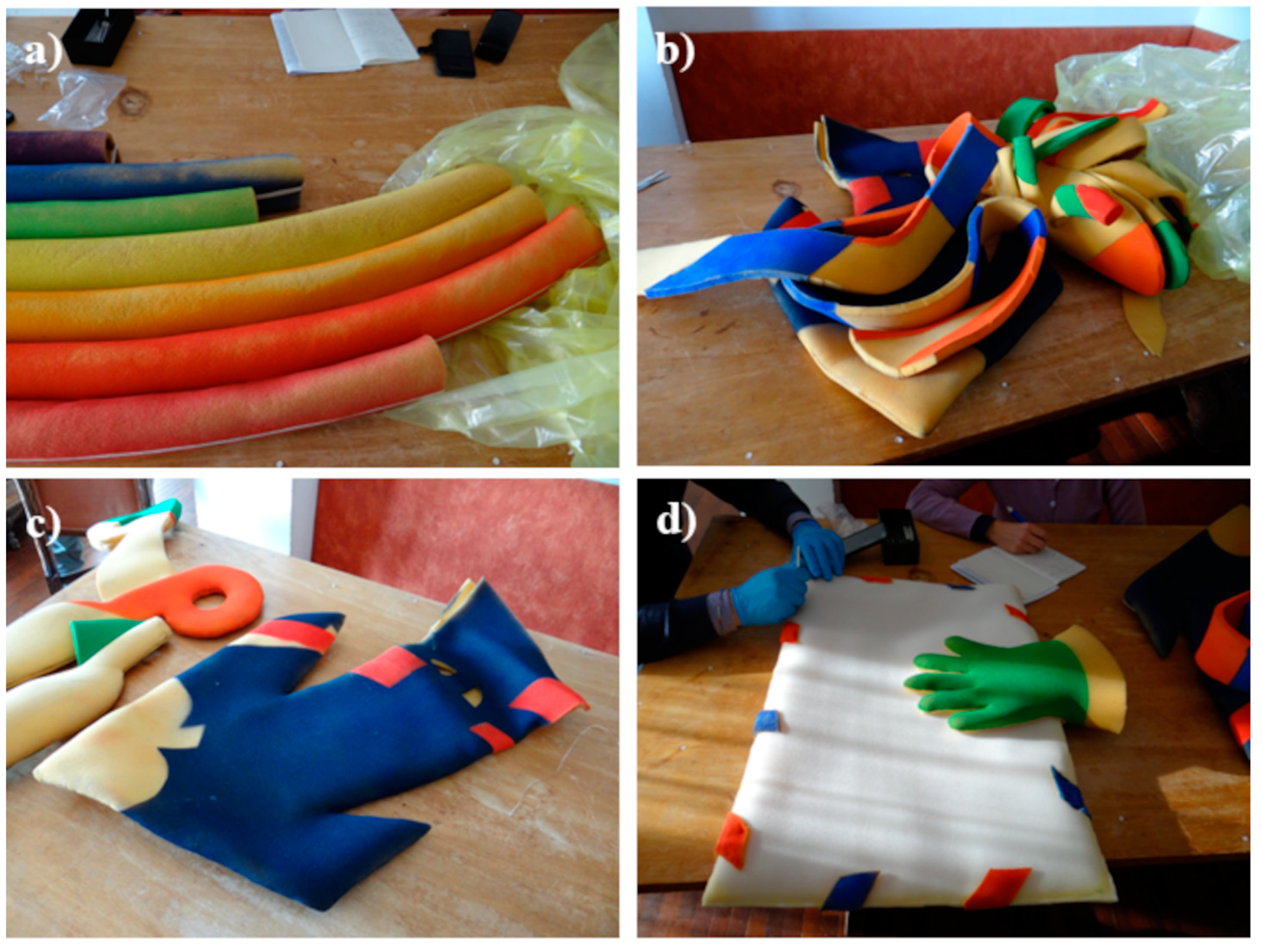
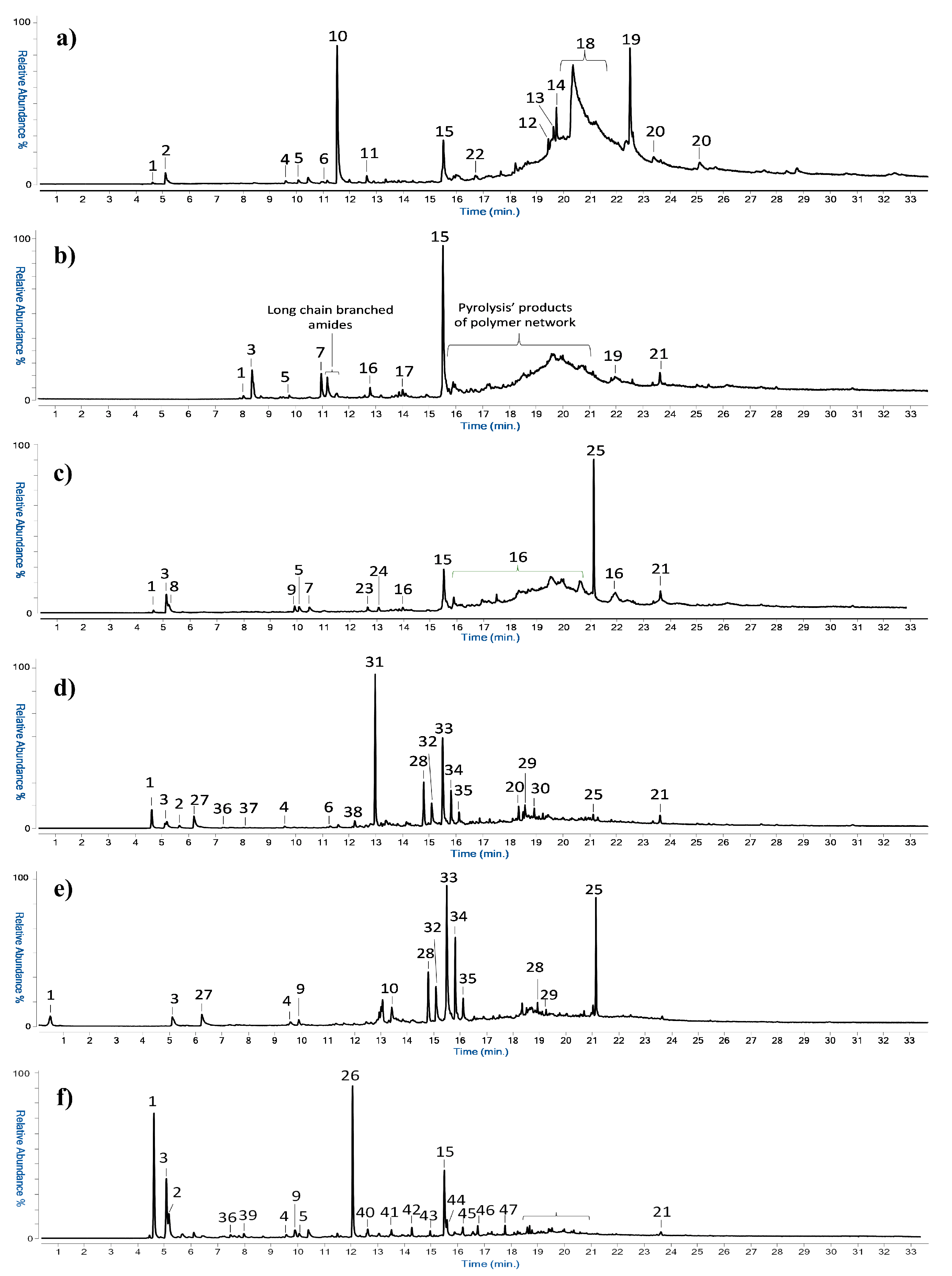

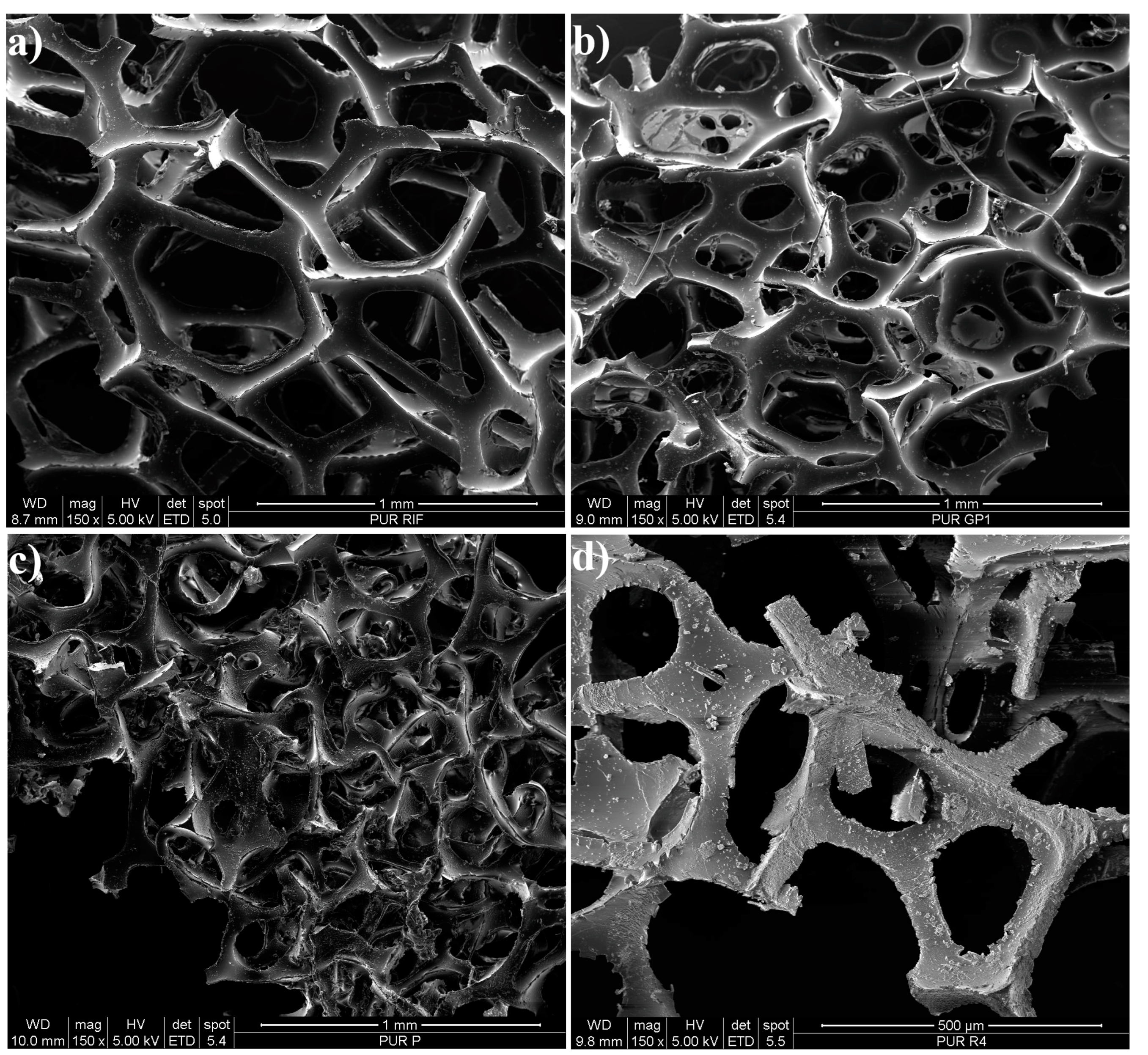
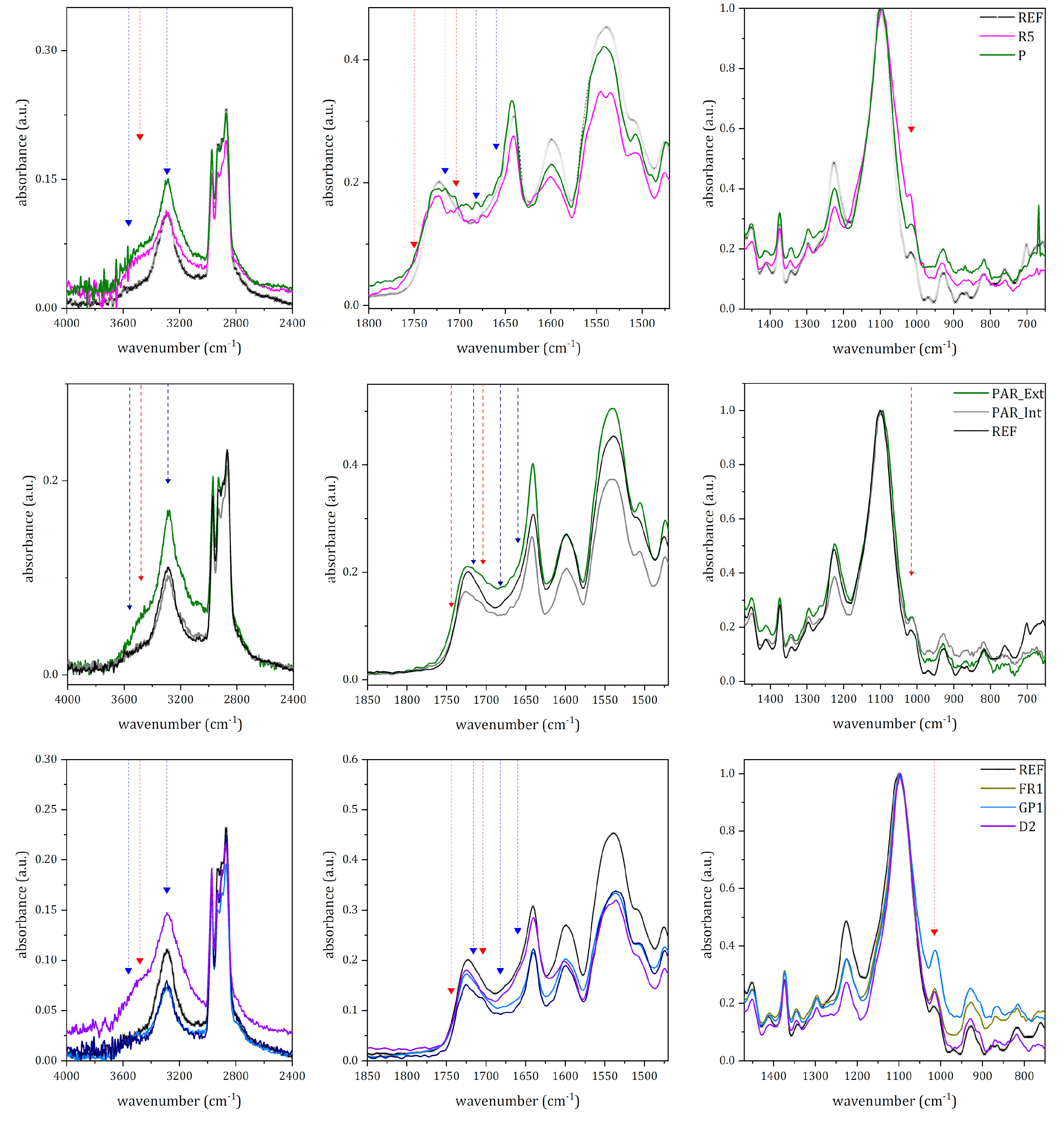
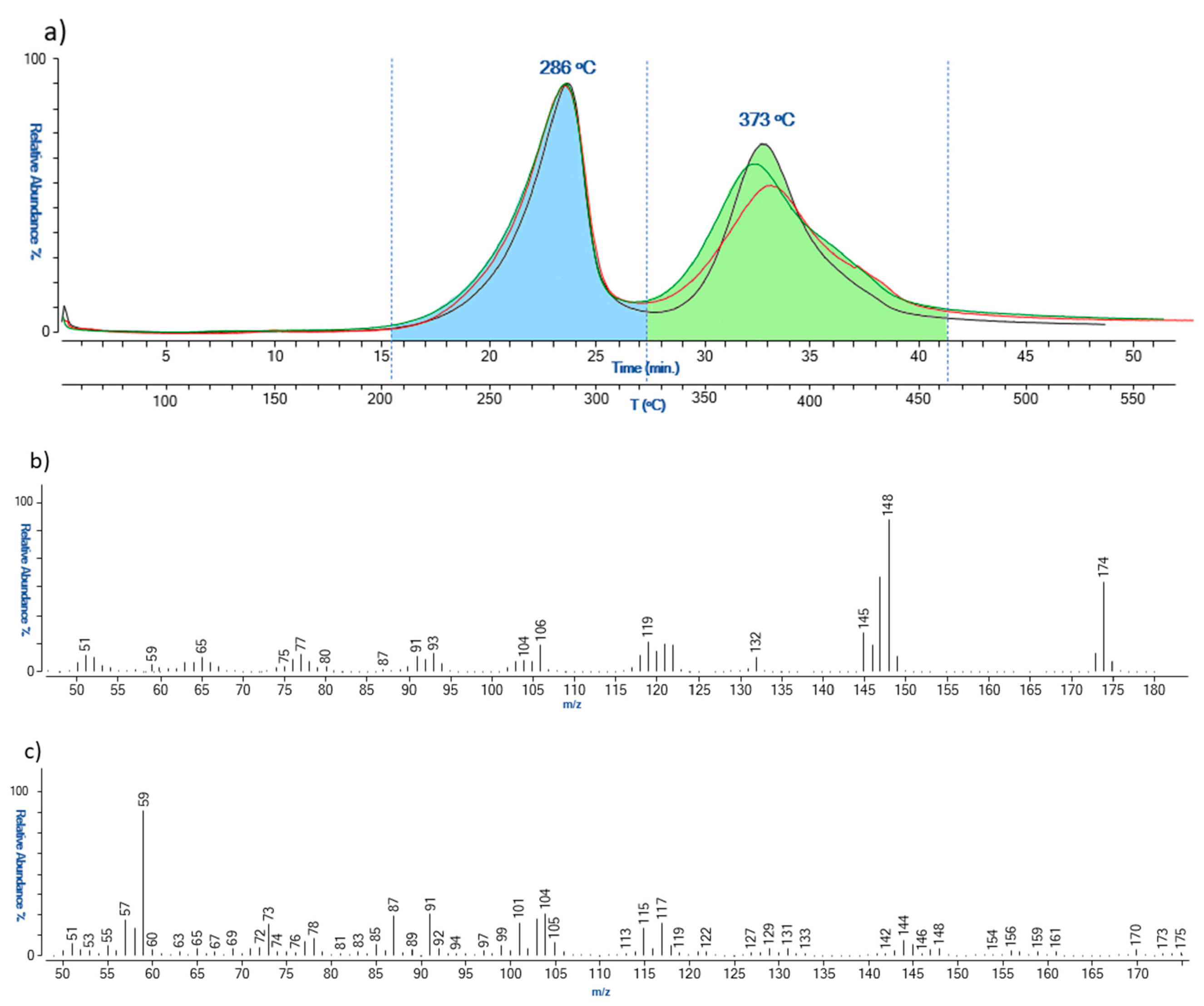
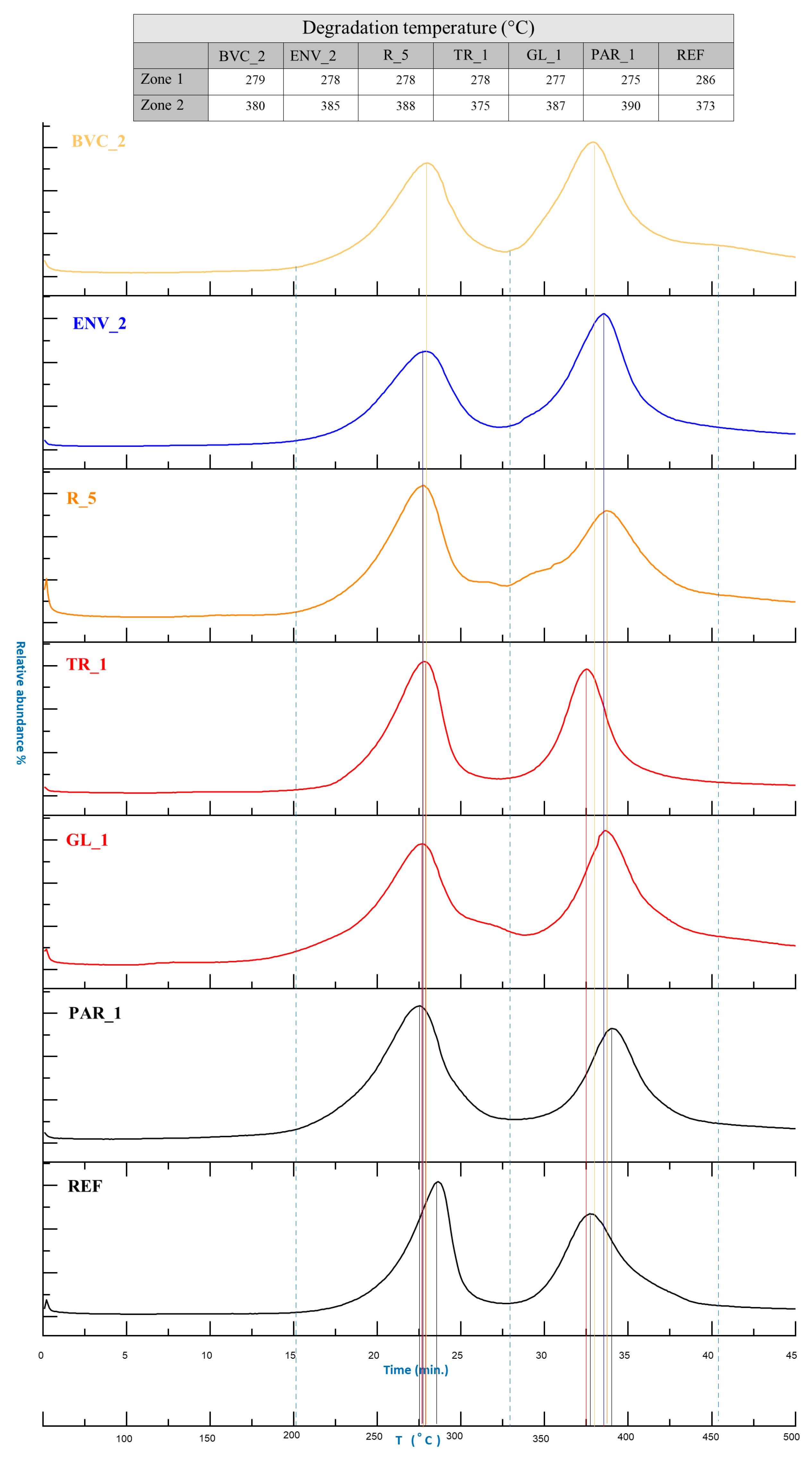
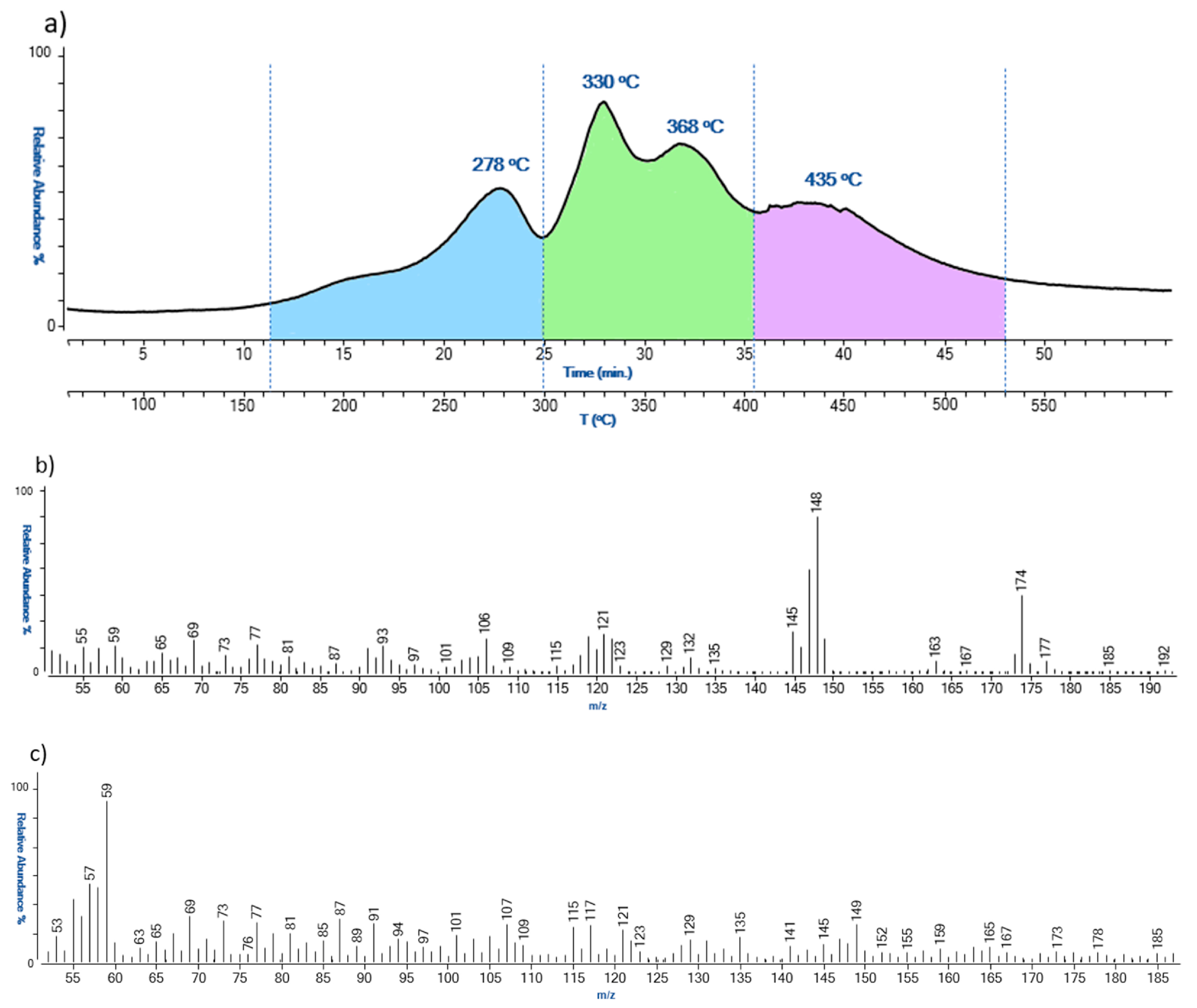
| Artwork | Author, Date | Sample | Description |
|---|---|---|---|
| Reference | Carlo de Incontrera, 2020 | REF | Unpainted |
| Rainbow (Arcobaleno) | Miela Reina, 1960s | R_1 | Purple |
| R_2 | Blue | ||
| R_3 | Green | ||
| R_4 | Yellow | ||
| R_5 | Orange | ||
| R_6 | Red | ||
| R_7 | Dark orange | ||
| Parachutist (Paracadutista) | Miela Reina, 1960s | PAR_1 | Unpainted |
| Scarf (Sciarpa) | Enzo Cogno, 1970s | SCA_1 | Unpainted |
| SCA_2 | Blue | ||
| SCA_3 | Orange | ||
| SCA_4 | Blue | ||
| Scissors (Forbici) | Enzo Cogno, 1970s | SCI_1 | Unpainted |
| SCI_2 | Unpainted, glued | ||
| Arrow (Freccia) | Enzo Cogno, 1970s | AR_1 | Unpainted |
| AR_2 | Blue | ||
| AR_3 | Red, glued | ||
| Dragon (Drago) | Enzo Cogno, 1970s | DR_1 | Unpainted |
| DR_2 | Dark orange | ||
| DR_3 | Red | ||
| DR_4 | Unpainted | ||
| DR_5 | Green | ||
| Big vibrating character (Grande personaggio vibrante) | Enzo Cogno, 1970s | BVC_1 | Unpainted |
| BVC_2 | Yellow | ||
| BVC_3 | Red, glued | ||
| Glove (Guanto) | Enzo Cogno, 1970s | GL_1 | Red |
| GL_2 | Blue | ||
| Tree (Albero) | Enzo Cogno, 1970s | TR_1 | Red |
| Envelope (Busta) | Carlo de Incontrera, 2020 | ENV_1 | Unpainted |
| ENV_2 | Blue |
Disclaimer/Publisher’s Note: The statements, opinions and data contained in all publications are solely those of the individual author(s) and contributor(s) and not of MDPI and/or the editor(s). MDPI and/or the editor(s) disclaim responsibility for any injury to people or property resulting from any ideas, methods, instructions or products referred to in the content. |
© 2023 by the authors. Licensee MDPI, Basel, Switzerland. This article is an open access article distributed under the terms and conditions of the Creative Commons Attribution (CC BY) license (https://creativecommons.org/licenses/by/4.0/).
Share and Cite
Costantini, R.; Nodari, L.; La Nasa, J.; Modugno, F.; Bonasera, L.; Rago, S.; Zoleo, A.; Legnaioli, S.; Tomasin, P. Preserving the Ephemeral: A Micro-Invasive Study on a Set of Polyurethane Scenic Objects from the 1960s and 1970s. Polymers 2023, 15, 2111. https://doi.org/10.3390/polym15092111
Costantini R, Nodari L, La Nasa J, Modugno F, Bonasera L, Rago S, Zoleo A, Legnaioli S, Tomasin P. Preserving the Ephemeral: A Micro-Invasive Study on a Set of Polyurethane Scenic Objects from the 1960s and 1970s. Polymers. 2023; 15(9):2111. https://doi.org/10.3390/polym15092111
Chicago/Turabian StyleCostantini, Rosa, Luca Nodari, Jacopo La Nasa, Francesca Modugno, Lucia Bonasera, Sara Rago, Alfonso Zoleo, Stefano Legnaioli, and Patrizia Tomasin. 2023. "Preserving the Ephemeral: A Micro-Invasive Study on a Set of Polyurethane Scenic Objects from the 1960s and 1970s" Polymers 15, no. 9: 2111. https://doi.org/10.3390/polym15092111
APA StyleCostantini, R., Nodari, L., La Nasa, J., Modugno, F., Bonasera, L., Rago, S., Zoleo, A., Legnaioli, S., & Tomasin, P. (2023). Preserving the Ephemeral: A Micro-Invasive Study on a Set of Polyurethane Scenic Objects from the 1960s and 1970s. Polymers, 15(9), 2111. https://doi.org/10.3390/polym15092111






